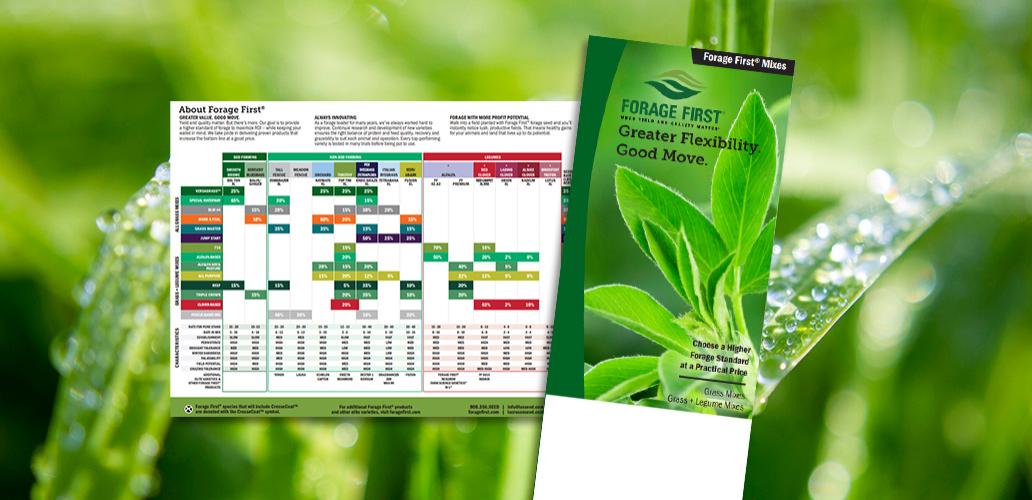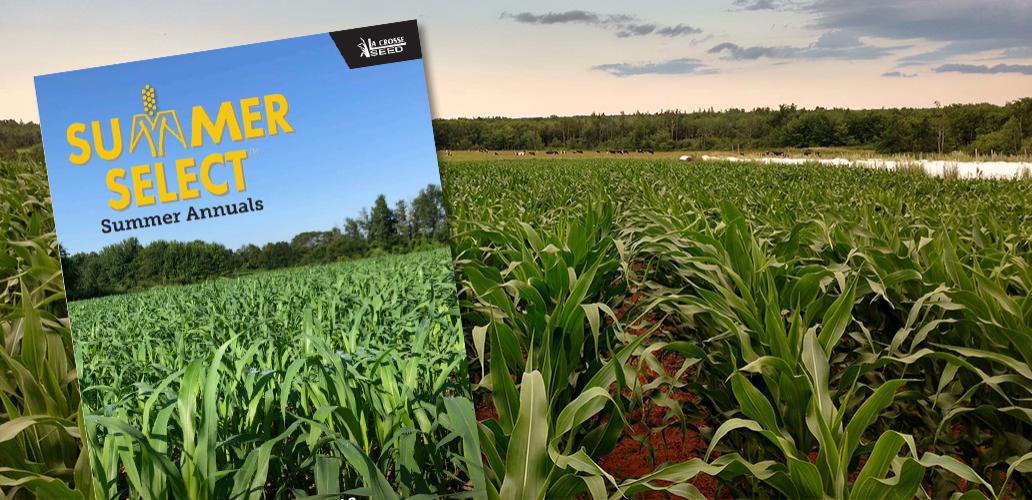Forage First Guide I Summer Select Guide
Greater Value. Good Move. Yield and quality matter. But there’s more. Our goal is to provide a higher standard for forage to maximize ROI– while keeping your wallet in mind. We take pride in delivering proven products that increase the bottom line at a good price.

Tetrabana XL is a blend of tetraploid Italian ryegrasses. It offers high levels of digestible carbohydrates which contribute to increased weight gain and milk yield. The well developed root system supports additional top growth and provides cattle with a cleaner, healthier environment when wet conditions exist.
CHARACTERISTICS:
Establishment: Fast
Persistence: Low
Drought Tolerance: Low
Winter Hardiness: Low
Palatability: High
Yield Potential: High
Grazing Tolerance: High
SEEDING:
Seeding Rate:
Alone (lbs./acre): 20-40
Mixes (lbs./acre): 5-10
Seeds/lb.: 227,000
Depth (in.): 1/4-1/2
Planting Time:
Mar.-May; Aug.-Sept.
Emergence (days): 5-14
Life Cycle: Annual
Adaptation:
These grasses have a wide range of adaptability to soils, but thrive best on fertile soils with pH between 5.5-6.5. They produce well in regions having mild climates and do not withstand hot, dry weather or severe winters. They will stand fairly wet soils with reasonably good surface drainage.
Establishment:
Plant seed ¼-½ in. deep in well prepared seedbed. In general, annual ryegrass component of a mix should be 20% or less since it is very competitive, due to rapid germination and good seedling vigor.
MANAGEMENT:
Rotational Grazing:
Begin (in.): 8-12
Stop (in.): 3-6
Avg. Days Rest: 25-30
Hay or Haylage Harvest:
Cut boot to mid-bloom
Ryegrass is generally cut for hay when seed heads start to emerge. Pastures should be rotationally grazed when spring growth is 3-4 in. high. Allowing 7-10 in. of regrowth between grazings benefit yields and persistence. On new seedings, harvest or grazing should be delayed until plants are 10-12 in. tall. Ryegrass responds well to good management, such as intensive rotational grazing and fertilizer applications.

Ratings
Scale 1-9, where 9 = best or most pronounced
Persistence
Drought Tolerance
Winter Hardiness
Palatability
Yield Potential
Grazing Tolerance
- Highly palatable
- High leaf to stem ratio: higher digestibility
- Good drought & heat tolerance, able to persist into late summer in second year
- Excellent for high-traffic or wet pastures
- High yielding & top feed qualities
- Rapid establishment – ideal for intensive grazing, renovating pastures & frost seeding

.png)
.png)


.png)










